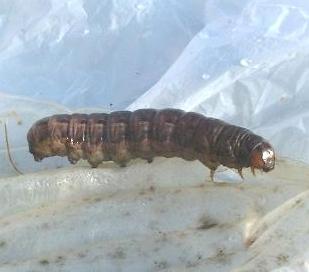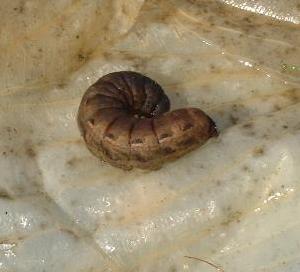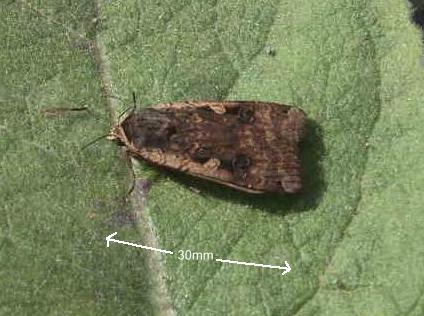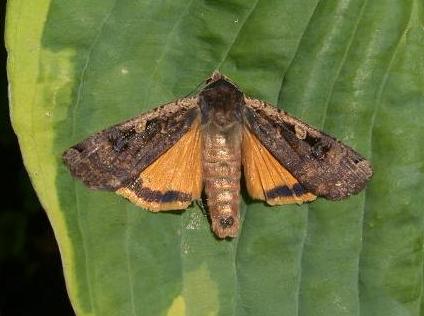Large Yellow Underwing Moth Caterpillar
Scientific name: Noctua pronuba
This caterpillar is the larval stage of the Large Yellow Underwing Moth, one of the
pests known as a cutworm. The great plantsman E.A. Bowles mentioned their destructive habits in My Garden in Spring, the first in his trilogy of books about his garden in Middlesex. He suggested hunting for them by lamplight to keep them from damaging "the tender, juicy buds" of his beloved early-flowering Irises.
They develop between September and April above ground feeding on the stems
and leaves of grasses and other plants, sometimes grazing them off at ground level.
When disturbed the caterpillar adopts a 'c'-shape and this one was about 35mm in length, but they can
be up to 50mm long.


The adult moths which appear between May and September, have a wingspan of 50-60mm with forewings varying from light brown to nearly black and some darker spots. The underwings a are more striking orange-yellow with a black band. They rest during the day in vegetation, and if disturbed will flash their bright underwings. They feed on the nectar of Ragwort, Red Valerian and Buddleja


Adult moth with the right-hand picture showing the yellow underwings.
While the damage caused by the caterpillars is not usually of great note, they should be moved to rougher ground if found among ornamental plants, though Mr Bowles would have disagreed.
Back to GARDEN CREATURES